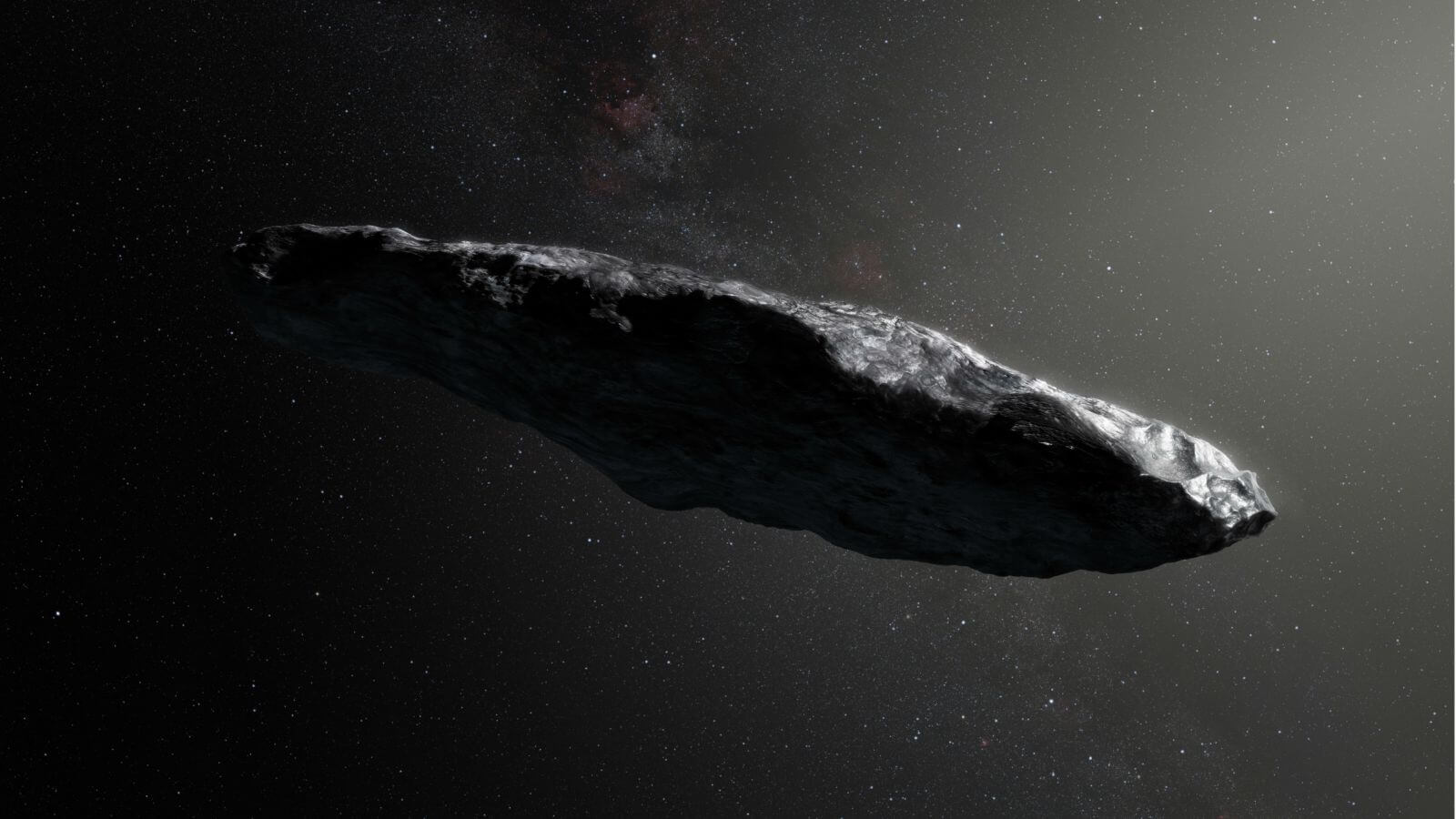In brief: Public interest in UFOs, alien technology, and galaxies far, far away has never been higher than it is right now. And it’s likely to ramp up even further following news that fragments of an interstellar meteor – or is it from an alien probe? – have likely been discovered on the ocean floor.
The story starts in 2017 when astronomers working on the Pan STARRS telescope in Hawaii spotted the first interstellar asteroid ever observed – Oumuamua (below), an object measuring about a quarter of a mile long.
Avi Loeb, who serves as Frank B. Baird, Jr. Professor of Science at Harvard University, was one of the most respected names to propose that Oumuamua isn’t an asteroid, but a piece of alien technology. That led to his suggestion that Amir Siraj, an astrophysics student at Harvard, search NASA’s Center for Near Earth Object Studies’ (CNEOS) database of over 1,000 reported fireballs and meteor impacts.
One entry that caught Siraj’s attention was a fireball that exploded near Manus Island on January 8, 2014. Its speed of over 130,000 miles per hour and the fact it exploded much lower in the Earth’s atmosphere than other meteors made it stand out. According to a study led by the pair, this indicated “a possible origin from the deep interior of a planetary system or a star in the thick disk of the Milky Way galaxy.”
The study was submitted to The Astrophysical Journal Letters, but missing information held from the CNEOS database by the US Department of Defense, which uses the same technologies to monitor the skies for nuclear detonations, hampered the review process.
But things changed in April last year when the United States Space Command (USSC) confirmed the pair’s findings in a memo.
6/ “I had the pleasure of signing a memo with @ussfspoc‘s Chief Scientist, Dr. Mozer, to confirm that a previously-detected interstellar object was indeed an interstellar object, a confirmation that assisted the broader astronomical community.” pic.twitter.com/PGlIOnCSrW
– U.S. Space Command (@US_SpaceCom) April 7, 2022
And so began a Galileo Project expedition to the Pacific Ocean to retrieve spherules – sub-millimeter-sized spheres – of the interstellar meteorite, IM1. An estimate of where the debris had fallen was calculated using DoD data and seismology readings. With $1.5 million in funding from Charles Hoskinson, the entrepreneur founder of blockchain company Cardano, the team set off. It included Rob McCallum, a former OceanGate Expeditions consultant who had tried to warn CEO Stockton Rush about the Titan submersible’s safety issues in 2018.
Coincidentally (or was it?), days before Prof Loeb set off for Papua New Guinea in June, David Charles Grusch, a former high-ranking intelligence official, claimed the US government, its allies, and defense contractors have retrieved partially and fully intact exotic vehicles that have either landed or crashed. The craft are described as non-human in origin.
“I believe that it is easier to seek extraterrestrial facts on the ocean floor than to get them from the government,” Loeb wrote.
The aluminum Silver Star vessel set off for the meteor’s landing zone, 52 miles north of Manus Island, Papua New Guinea, with the team on June 14.
“There are about 850 spoken languages in Papua, the most linguistically diverse place on Earth,” Prof Loeb wrote on Medium. “Yet, if the expedition recovers a gadget with an extraterrestrial inscription, we will add a new language to this site.”
A few days later, a 3-foot-wide magnetic sled was dropped to a depth of 1.2 miles onto the ocean floor and pulled along by the ship around a six-mile-wide area. After a week of frustration, a filter with a mesh size of a third of a millimeter was used to sift through the tiny volcanic particles and examine the remaining larger particles under a microscope. It was then that they found a metallic marble of sub-millimeter size and sub-milligram mass. More IM1 spherules, made of a steel and titanium alloy stronger than what is found in other meteorites, were discovered within a few hours.

Prof Loeb holding shards of corroded iron that he recovered from the magnetic sled
Prof Loeb calculated that two of the spherules have an age of order of the age of the universe – 14 billion years. It’s hoped that evidence of the meteorite’s interstellar origin will be found in the coming weeks when they are analyzed at the Harvard College Observatory.
Professor Loeb says the team is making plans for another expedition in the spring of 2024, where they will search for a larger relic of IM1. The discovery will be a great aid in revealing the meteor’s natural, or technological, origin.
“Throughout my career, I focused on theoretical astrophysics. I chose to lead this expedition because it addresses a fundamental question of great importance to the future of humanity: ‘Are we alone?'” Loeb wrote.
“This is not a philosophical question. A technological device might be lurking 2 kilometers under the ocean surface with the answer. If so, we shall find it!”
















